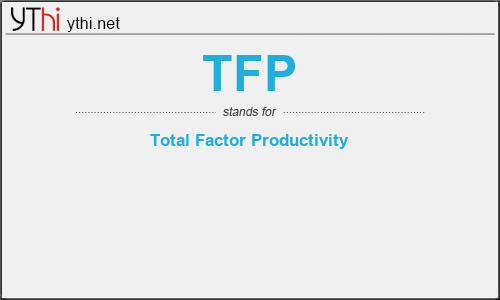What does TFP mean? What is the full form of TFP?
The Full Form of TFP is Total Factor Productivity.
Total factor productivity (TFP) is a measure of productivity calculated by dividing economy-wide total production by the weighted average of inputs i.e. labor and capital. It represents growth in real output which is in excess of the growth in inputs such as labor and capital.
Productivity is a measure of the relationship between outputs (total product) and inputs i.e. factors of production (primarily labor and capital). It equals output divided by input. There are two measures of productivity: (a) labor productivity, which equals total output divided by units of labor and (b) total factor productivity, which equals total output divided by weighted average of the inputs.
In economics, total-factor productivity (TFP), also called multi-factor productivity, is usually measured as the ratio of aggregate output (e.g., GDP) to aggregate inputs.[1] Under some simplifications about the production technology, growth in TFP becomes the portion of growth in output not explained by growth in traditionally measured inputs of labour and capital used in production.[2] TFP is calculated by dividing output by the weighted average of labour and capital input, with the standard weighting of 0.7 for labour and 0.3 for capital.[3] Total factor productivity is a measure of economic efficiency and accounts for part of the differences in cross-country per-capita income.[2] The rate of TFP growth is calculated by subtracting growth rates of labor and capital inputs from the growth rate of output
TFP
means
Total Factor Productivity![]()
Translate Total Factor Productivity to other language.


Leave a Reply
You must be logged in to post a comment.